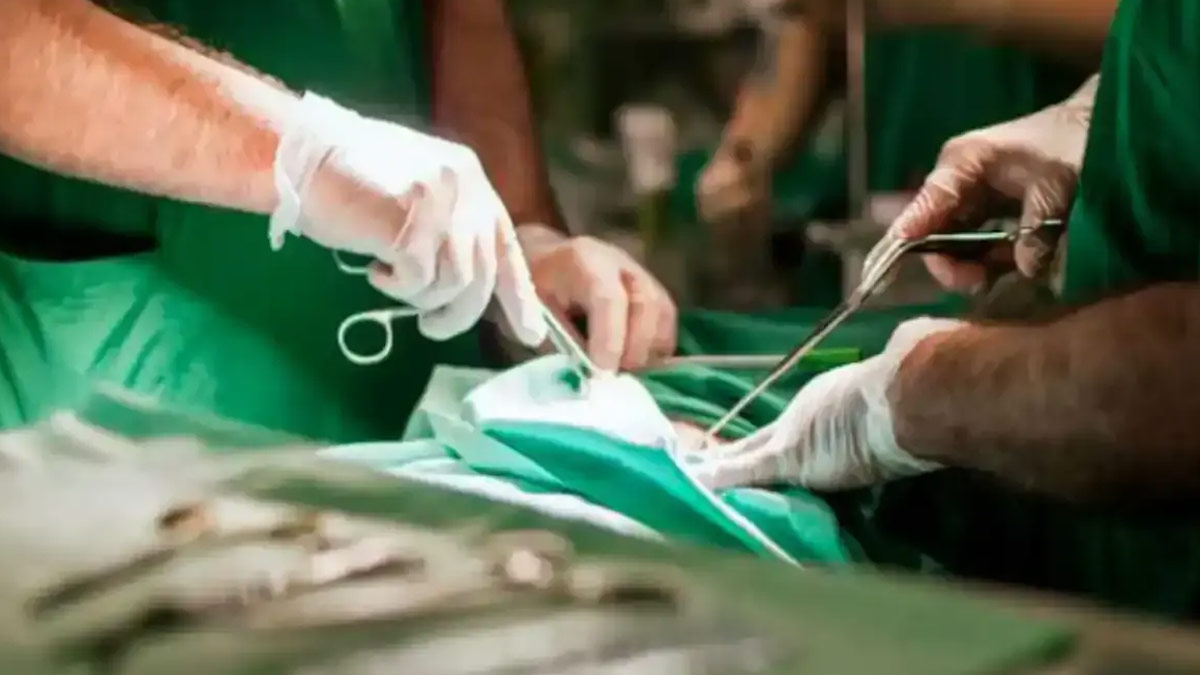
In a rare medical case, doctors in Bengaluru successfully removed a large hairball, roughly the size of a cricket ball, from the stomach of an 8-year-old girl. This unusual condition, known as trichophagia, involves the compulsive eating of hair, leading to the formation of hairballs, or trichobezoars, in the gastrointestinal tract. The case sheds light on a lesser-known psychological disorder and its potential health risks.
Table of Content:-
The Mystery Behind Aditi’s Symptoms
Aditi (name changed for privacy), had been experiencing a perplexing series of symptoms over the past two years. Her parents were concerned by her persistent loss of appetite and frequent vomiting, which seemed to have no clear cause. Despite consulting multiple doctors, including paediatricians and general physicians, Aditi's condition was misdiagnosed as gastritis. The prescribed medications offered no relief, leaving her parents frustrated and desperate for answers.
It wasn't until Aditi was taken to Aster’s Children and Women Hospital in Bengaluru that the true cause of her symptoms was discovered. A thorough examination revealed that she had a trichobezoar—a large mass of hair that had accumulated in her stomach due to trichophagia. This finding was surprising, given that trichophagia is typically more common in adolescent girls and is rarely seen in children as young as Aditi.

Understanding Trichophagia and Trichobezoars
Trichophagia is a psychological disorder characterized by the compulsive ingestion of hair. It is often associated with trichotillomania, a condition where individuals have an uncontrollable urge to pull out their own hair. While trichophagia can manifest in various forms, ranging from chewing and sucking on hair to fully ingesting it, the most severe cases can lead to the formation of trichobezoars. These hairballs can grow over time and cause significant health issues, including blockages in the gastrointestinal tract, malnutrition, anaemia, and even life-threatening complications.
In Aditi’s case, the trichobezoar had grown so large that it required surgical intervention. Dr. Manjiri Somashekhar, Lead and Senior Consultant in Pediatric Surgery at Aster’s Hospital, noted the rarity of such a condition in someone so young. “Trichobezoar is an extremely rare condition, particularly in a child as young as Aditi. It is often associated with trichophagia, which is a psychological disorder where individuals eat hair. While commonly seen in adolescent girls, finding this in a much younger child highlights the uniqueness of this case,” she explained.
Also Read: Surge in Upper Respiratory Infections Reported in Telangana: Essential Tips to Stay Safe
The Surgical Solution: Laparotomy
Given the size and stickiness of the hairball, a traditional endoscopy was deemed insufficient for its removal. Instead, Aditi underwent an open stomach surgery, known as a laparotomy, to extract the hairball. The surgery, which lasted two and a half hours, was successful, with doctors carefully ensuring that no hair fragments were left behind that could cause further complications.
Dr. Somashekhar emphasized the importance of timely intervention in such cases. If left undiagnosed, Aditi's condition could have led to severe malnutrition, anaemia, and even significant bleeding from the stomach. The successful removal of the trichobezoar not only alleviated Aditi’s immediate symptoms but also prevented the potential long-term consequences of her condition.
Post-Surgery Care and Ongoing Treatment
Following the surgery, Aditi was placed on a special diet to aid in her recovery. Additionally, she continues to receive counselling to address the underlying psychological aspects of her condition. Trichophagia, being a form of disordered eating, often requires a multifaceted approach to treatment, involving both medical and psychological care. Regular monitoring is crucial to ensure that Aditi does not relapse into her previous habits and that she maintains her overall health.
Raising Awareness and Seeking Help
Aditi’s case highlights the importance of awareness and early diagnosis when it comes to rare conditions like trichophagia. Parents, caregivers, and healthcare providers should be vigilant in recognizing the signs of this disorder, particularly in young children who may not be able to articulate their symptoms.
Also Read: Maharashtra Reports 70% Increase in H1N1 Cases and 30 Deaths in 2024
If a child exhibits unusual eating habits, such as chewing on or swallowing hair, it is important to seek medical advice promptly. Early intervention can prevent the development of trichobezoars and other serious complications. Additionally, addressing the psychological aspects of trichophagia through counselling and therapy can significantly improve the individual’s quality of life.
Bottomline
In conclusion, Aditi’s story is a reminder of the complex interplay between physical and psychological health. While her successful surgery marks a significant milestone in her recovery, the ongoing care she receives will be vital in ensuring her long-term well-being. Through increased awareness and understanding of trichophagia, other children like Aditi can receive the help they need to overcome this challenging condition.
Also watch this video
Read Next
Fixed Dental Implants Vs Removable Dentures: Which Tooth Replacement Option Is Right for You?
How we keep this article up to date:
We work with experts and keep a close eye on the latest in health and wellness. Whenever there is a new research or helpful information, we update our articles with accurate and useful advice.
Current Version
